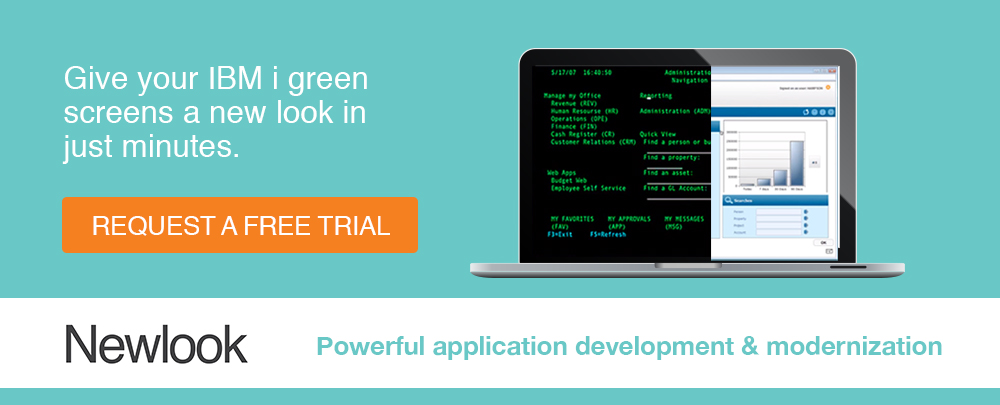So, you’ve finally realized that you can’t hold off modernizing your IBM i applications. You’ve known for some time now that your IBM i applications need to evolve, and you’ve decided that this is the year to get it started.
So what strategy will you choose?
Replace all your current applications (which are perfectly tailored to your unique way of doing business) with some commercially available application?
Rewrite all your applications into a new language?
Modernize current applications (screens, databases, code) with newer technologies so you can keep enjoying the reliability of the IBM platform?
How about all of the above?
In our discussions with clients, we’re increasingly realizing that no single approach can fully meet existing needs and provide the best return on investment. They each provide different benefits:
1. Rolling out a new management solution that covers all business functions requires considerable effort from all of the company’s departments and involves a lot of risk regarding the ultimate success of the project. However, wouldn’t certain business units—such as finance—be better served by a commercially available solution that evolves naturally with the new possibilities offered by technology?
2. Is it still reasonable to want to “reinvent the wheel” in 2018 when many solutions feature business best practices that will support your company’s competitiveness? But if you want to continue innovating in the market and enhancing your productivity, isn’t it also essential to simplify your processes and have systems in place that were developed specifically to support your growth?
3. Your source code was developed by a diverse team over the course of more than 20 years. Can it be easily migrated to a new programming language that will ensure its sustainability for years to come? Still, part of the recipe for your company’s success is buried in your systems, and you want to keep that DNA intact. It wouldn’t do to throw out the baby with the bathwater…

These considerations show why a hybrid solution could be the best way to evolve your current systems while benefitting from market leading solutions for your more standard functions - by modernizing your custom applications that are core to your business operations and re-rewriting the specific modules that require new functionality to support business growth. As always, the 80/20 rule (Pareto principle) shows us the way forward.
Of course, you’ll need to assess what should be replaced (and by what) and develop a solid strategy. The nice thing about a hybrid approach is that it is particularly well suited for an incremental rollout, which lets you easily adjust to business changes along the way.
Don’t hesitate to seek outside help from experts to analyze the various components and formulate recommendations and a strategy. Although you have an experienced IT team, they may be too close to your current applications and may not have had enough opportunities to assess modernization projects from a high-level perspective to highlight all the options available to you.












